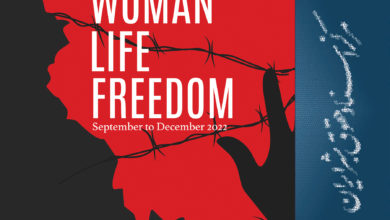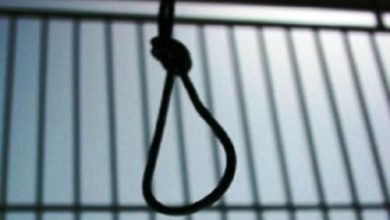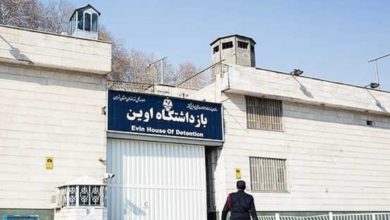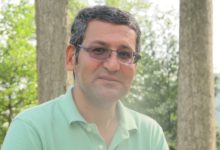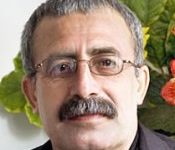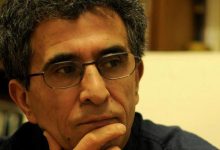Witness Statement of Gelawij Heidari
 Photo of the witness (credit: http://kurdishperspective.com |
|---|
Name: Gelawij Heidari
Place of Birth: Paveh, Iran
Date of Birth: 1956
Occupation: Home maker
Interviewing Organization: Iran Human Rights Documentation Center (IHRDC)
Date of Interview: January 29, 2011
Interviewer: IHRDC Staff
This statement was prepared pursuant to an in-person interview with Gelawij Heidari. The statement was approved by Gelawij Heidari on January 29, 2011. There are 74 paragraphs in the statement.
The views and opinions of the witness expressed herein do not necessarily reflect those of the Iran Human Rights Documentation Center.
Statement
Background
1. My name is Gelawij Heidari. I am a Kurd from Paveh, a town in Iran near the Iraqi border. I am a homemaker and I turn 55 years old this March. I left Iran on April 4, 2000. I could no longer stay in Iran because of the pressures the Islamic Republic put on my family.
2. The bruises on my body from the club wielders of the Pahlavi regime had not yet healed when the Islamic Republic came to power. Shortly thereafter, Khomeini issued a fatwa—or religious edict—of Jihad against Kurdistan.[1] As part of the violence that ensued, my husband, Habibullah Cheraghi, was executed in August 1979.
Violence in Paveh and Execution of Husband
3. My family and I were living in Paveh when Khomeini issued the fatwa to attack the town. Government forces set siege to the town; gunfire was coming from every direction.
4. I was in the backyard of my house with my little daughter Sheneh resting in her cradle when government forces attacked our home. Chamran’s[2] forces were nearing defeat so for their own self-preservation they surrounded different houses and took people with them. Revolutionary Guards encircled the house and started firing machine guns. Sheneh screamed from her cradle but we could not get to her. We escaped to the basement.
5. My husband Habibullah Cheraghi, my cousin’s husband Mohammad Heidari, and two guests came out of the basement and said: we have done nothing! Nevertheless, the revolutionary guards handcuffed them and took them away.
6. My husband and eight other people were shot in front of the Paveh hospital on August 21, 1979 on the execution order of Ayatollah Khalkhali. Khalkhali came from Tehran that very night and issued their sentences immediately.[3] Some of those executed included Habibullah Cheraghi, Mohammad Heidari, Hamed Bahmani, Bahman Ezzati (a teacher who came from Kermanshah to bring medicine for the ailing), Dr. Abulghasem Rashvand Sardari (a heart surgeon from Tehran) and Seifoddin Ziyaee (a lab technician in Paveh). We discovered they were executed when government forces went through town and ordered over a loudspeaker that we retrieve the bodies.
7. Another one of the executed was my father’s second cousin (his dad and my dad are cousins). Also Dr. Yasin Irandoust was killed. He was a close friend of ours and his brother was arrested with me. All those killed were Kurds, not that the IRI differentiated between Kurds and Fars!
8. My husband and Mohammad Heidari were freelance contractors. The reason given for their execution was their alleged cooperation with anti-revolutionaries. My husband was a member of the KDP (Iran)[4] but he had not done anything.
9. Two or three days after the execution of my husband, I went to the Komiteh and said I wanted to see Khalkhali. Mohammad Heidari’s mother accompanied me. When Khalkhali came walking out of the Komiteh building, I approached him and asked why he executed my husband. He said that if my husband was innocent, he became a martyr and would go to heaven; and if he sinned then he got what he deserved.
10. The authorities did not bury my husband in the public cemetery. Instead, the authorities insisted that he be buried separately. They returned my husband and my cousin’s husband’s body and gave us a piece of land and said we could bury them there.
11. The bodies of Bahman Ezzati and Rashvand Sardari were initially buried in front of the sewer of the morgue. Later on however the bodies of Bahman Ezzati and Rashvand Sardari were returned to their relatives. Then they were buried in the same row as my husband and my cousin’s husband. From the beginning they planned to segregate the graveyards.
12. After the execution of my husband, they sent my husband’s will to me and I still have it. My husband had a construction company—but the authorities confiscated that.
13. The government’s treatment of Kurds killed as combatants was really terrible. The government paraded the naked corpses of killed Kurds around Paveh. Three of the people executed with my husband were placed in a truck and revolutionary guards instructed the townspeople over a loudspeaker: come and see those we have killed. The corpses were taken to another location where they were buried stark naked. A bunch of rocks were dumped on the burial site.
14. Unfortunately the practice of parading naked corpses continued. In 1984, some Komala peshmarga[5] were holding information sessions for people in the area of Salas-e Babajani. Some of them were captured and executed. A girl named Fa’ezeh Shahabi and Jalil Heidari were two of those executed and they were stripped to their undergarments and paraded around a few Kurdish cities. Afterwards, they were buried in a mass grave near Paveh.
15. I did not see this incident myself. Mohammad Heidari’s father told me this story. He heard that the girl who had been killed and paraded around town was my sister. When he attempted to get her body back and saw her corpse in the street, he realized it was not my sister.
Death Sentence against Father and Confiscation of Property
16. At that time, the authorities also issued a death sentence against my father in absentia for his participation in a protest. The demonstration was a sit-in to protest the military presence in the city when the government invaded Paveh to intimidate the Kurds. My father was a liberal and loved freedom but he was not affiliated with any group or party.
17. In May 1980, my father was invited to the KDP (Iran) headquarters by one of his friends. Since he was on the run, every so often, he would go to the KDP (Iran) headquarters because he had friends there. The party headquarters were spread out in different locations in the mountains. The government surrounded the headquarters using helicopters and deployed a lot of ground forces on the scene. They assassinated my father. At the time, my father was 50 years old.
18. Government forces seized all of my father’s property. My father was a businessman and had an import/export business as well as a construction company. He owned two stores. When they attacked my father’s house, everything was either confiscated or destroyed. I tried very hard to get back some of the confiscated things. I took some things back but most of the property was confiscated. My father had a piece of land in front of the Sepah office that they wanted to take from us for next to nothing. They pressured me until I signed away the piece of land. They also confiscated the stores.
19. Every time I went to court to address the property disputes, the head judge was accommodating towards me. However later I received a confiscation letter. One time, the head judge told me he knew that the law was on my side but that he could not cut off his family’s source of income. He said that the intelligence ministry ordered him to undertake the actions against my family’s property and that he could not rule otherwise if he hoped to keep his job.
Other Family Troubles
20. Prior to the murder of my father, my father, mother, and brothers and sisters were on the run. Only my youngest sister—who had nowhere to go—remained with me. I was 23 years old with three children—a 7 year old, a 5 year old and a 5-month-old staying in the house.
21. At this same time, my baby Sheneh fell ill. She was only six months old and caught measles and the whooping cough. My aunts took the child to the hospital but Ozra Naghshbandi—one of the female members of the Islamic Revolutionary Guards Corps (IRGC) who was a nurse at the hospital—locked the door to the drugstore and said: we do not give medicine to the children of anti-revolutionaries. The doctor on site reminded her that they had taken an oath to medicine and had to provide medication to the child. In response Ozra said: the children of anti-revolutionaries deserve to die.
22. Eventually my uncle got a letter from the Komiteh that ensured the return of my mother and my little brother. They went to Kermanshah. I also resettled in Kermanshah after 1980. Although my mother and my little brother returned, my father and brothers were still on the run. My oldest brother Mansour was a member of the Komala. My other brothers were in high school and middle school.
23. Six months after the death of my father and under pressure from the Islamic Republic, my mother, who was in her forties, had a stroke and passed away in December 1980. At that time, one of my brothers was six years old.
24. In the year 1983, my big brother, Mansour Heidari, was a Komala Peshmerga and died among them in battle. The Islamic Republic surrounded one of their villages and killed my brother.
25. My sister, Shahla, who was a teacher, was fired from her job around 1982. In May 1983, Shahla was arrested for the crime of being an anti-revolutionary. My sister went to Sanandaj to cross the border and join up with the peshmerga. Authorities surrounded her and arrested her at the border. She was in prison for 13 months and then finally freed.
26. In October 1983, my younger brother Faroogh Heidari—a Komala Peshmerga—died in government gunfire. The Komala headquarters was located in mountains and villages and the IRGC received intelligence about their location, raided the villages and attacked the Komala.
27. In June 1984, my other brother Nasser Heidari—a Komala Peshmerga—stepped on a landmine in the area of Salas-e Babajani. Iranian Revolutionary Guards had planted mines there.
28. My other sister, Sohiba, was expelled from Tabriz University in early 1983. The authorities charged her with being an anti-revolutionary although she was not a member of any group. She was only charged because of her familial association to us. At that time, she was only 19 years old.
My Arrest and Imprisonment
29. On July 7, 1983 I was arrested on account of my membership in Komala. The authorities discovered I was Komala because I had a clandestine meeting with another party member in the street, who was arrested. The organization’s cover was blown. So I was arrested as well.
30. Three agents arrested me. Two were in plain clothes, and one was in a green outfit. They tried to put me in their car but I did not want to get in—I did not know who they were. I demanded to know how I could identify that they were not thieves or another type of common criminal. They told me they were Komiteh and showed their identification cards. Their appearance did not fit with that of the Komiteh since they had sporty clothes on. Then they put me in the car, placed my head between the seats and blindfolded me. They said: we have a few questions for you and will take you to prison. If there has been a mistake, you will be released.
31. When we got to the Komiteh building, I still had my blindfold on. They gave me a piece of cardboard to hold on to—the guard held onto one side of the cardboard and I held onto the other side. In this way, I was led to a room in the prison.
32. When I got to the room, the interrogator there asked my name and I said: Gelawij Heidari. He asked for my alias. I said: didn’t you say you arrested me by mistake? I don’t have an alias! He said: No, you are Komala and so we have arrested you. My alias was Roya and once he said it I knew I was definitely arrested.
33. Then, the interrogation began. I denied everything and said that I had not done anything and did not know anything. The fellow Komala member I had the clandestine meeting with and who was previously arrested was collaborating with the authorities to meet other Komala members and entrap them.
34. The interrogators asked: who do you work with? I said no one. They asked: are you with Komala? Are you with an organization? I said no. Then they asked: who are you in contact with? I said that I did not know anyone.
35. At first, only two interrogators were asking questions. Since I was blindfolded during the questioning I do not know for sure—there could have been more—but from their voices I knew that the IRGC guard who brought me there was standing next to me and another person was asking the questions. Later, when the interrogator saw that I was not cooperating, he told the other one: Hajj Agha, take her upstairs but be careful that she does not die under your hands.
36. They took me up the stairs and laid me face down on a bed. They handcuffed me to the bed and roped my feet to the bottom of the bed and threw a few blankets over me. I was blindfolded too. A guard sat on my head. They put a pillow over my mouth. A few other guards were present—I could hear them laughing at the work of the torturer. They sounded like they enjoyed my captivity and torture as if I was not human.
37. They began to hit me with a cable. After hitting me, they touched the soles of my feet with something to see whether my feet had feeling or had gone numb. If my feet were numb, they hit me all over my body with the cable. The guard was sitting on my head and I was suffocating. They said to me: whenever you want to confess, open your hand from a fist, and every time I wanted to breathe, I did this. Once I breathed a little they asked me to go ahead and confess and then each time I said: I have nothing to say.
38. I did not confess because I promised myself to never collaborate with the enemies of my motherland and my family. They wanted to know who was in our organization and who worked with us. How many people are in the central leadership and where were they based? What do we do and where was our operations team located? Who we were in direct contact with? What are the connections from the mountain [where the Komala was] to the city and from our city to Sanandaj?
39. They beat me so much with a cable that my oxygen supply was getting cut off. I shook my head so strongly that the guard who was sitting on my head fell down. The others laughed and he kicked my head hard with his boot. I fainted and they threw me into a small cell. After a while, I opened my eyes. I have no idea how much time transpired. All I know is that when they took me to the Komiteh it was 10 AM and when they took me for interrogation again it was night time.
40. A woman arrived and saw that I was not well but, again, I was taken for torture. The first time I was lashed I did not hear a female voice among the voices. I do not think there was a woman among them.
41. They beat me with a cable about 400 times. When they handed the piece of cardboard back to me for me to grab onto, I felt I was stepping on a high step or a pillow because my feet had swollen so heavily and blood pooled under the skin and caused bruising. They took me to the interrogator again. Again, I said I did not know anything.
42. When they were done with me in the torture room, they would return me to a dirty room where I sat with my blindfold next to me. Whenever they knocked on the door I was forced to put my blindfold on so they could open the door and take me with them. My time at the Komiteh was all in Kermanshah.
Transfer to Sanandaj Prison
43. After 24 hours at the Komiteh building in Kermanshah, I was transferred to Sanandaj prison in a car. The authorities blindfolded me and handcuffed me to the door of the vehicle.
44. There was a young man in the vehicle I did not recognize. We did not have permission to talk to one another—however I deduced that he was not a Kurd. We motioned to each other with our feet—I showed him my feet and he showed me his. I was able to see from below my blindfold. His foot was bleeding severely—it looked as if they had hit the foot with a hot iron and then lashed it with a cable.
45. My youngest daughter Sheneh was with me (because she was in my arms at the time of my arrest) but my other kids were at home alone and crying.
46. I was not allowed to tell anyone about my whereabouts and the authorities still had not informed my family about my arrest. My family did not know where I was and my uncle searched the whole city all day long, went to the Komiteh office three times and even went to the morgue. Finally, an elderly Revolutionary Guard and driver at the Komiteh told my uncle to stop looking for me—he said I was being held at the Komiteh and I was heavily tortured and could not even move. My uncle went home and told my family the news of my arrest.
47. I did not have visitations and received no news of my family and young kids. My adult family members were either killed or imprisoned so my young sister Sohiba became the guardian of my kids.
48. Because I had an injury to the head and had an internal hemorrhage I was not even able to drink water. For twenty-four hours after the blow to my head, I vomited and was unable to walk because my feet were swollen. The authorities just dragged me behind them with the cardboard they had me hold onto.
49. At Sanandaj prison, they placed me in a room with others and said to the others not to talk to me because the interrogator was not through with me. When I was in the ward I removed my blindfold. The other young girls in the room spoke to me and each other although their interrogations were not yet completed. We had a quick ten minute conversation about why we had been arrested. I said I was Komala. Many of them were also Komala. One was a Mujahed.
50. After I told the girls I was Komala, they brought me clothes, took me to the bath, put ointment on my feet and wrapped them in gauze. They gave me food. They washed my clothes that were dirty because I had been dragged around by the guards and was lying in the corridors because I could not sit due to my foot injury. The cell room was nine square meters and there were about 12 people in it. At 3 AM, they knocked on the door and took me off for interrogation although I already suffered 400 lashes. The girls were in the cell and I asked them what time it was. They took the others too because their interrogation had not ended either. We were afraid that they were taking us to execution.
51. When I was held in Kermanshah I was physically tortured—now in Sanandaj I was being psychologically tortured. They put me in a place where I could hear the screams of the boys and girls being tortured. My countrymen—the Kurds, the Iranians—they were killing them all.
52. They gave me the piece of cardboard to return to the ward—as they were leading me back, they told me to go up a set of stairs—but there were no stairs—and I fell head first. Or, they told me to walk quickly and I would but then would hit the stairs or the doors or the walls. I could not see anything because I was blindfolded.
53. My health was very bad and after 13 days, they took me to a solitary cell in Dezel Abad prison in Kermanshah. I was there for two months. I fell unconscious and the prison staff said I had epilepsy. At that point they took me to the neurological section—the psych ward—of the hospital. This visit was only to get medication and not for hospitalization.
54. I was constantly going unconscious in the ward. Every time they took me for interrogation, they suggested to me that I was ill and had epilepsy. When I asked my cellmate (they brought a temporary cellmate into my solitary cell for a few days) about my behavior, my cellmate told me that at times when I spoke to her, I fell unconscious in the middle of the conversation.
55. An IRGC guard took me to a brain and nerve hospital to be examined and to get medicine. The guard followed me into the examination room and told the doctor I was a criminal. The doctor asked me what happened. I said I fell down the stairs. The doctor was so indifferent towards me and my plight that I began to feel sorry for myself for undergoing all this pain in order to fight for such people. I started taking medication and was returned to my prison cell.
56. I was only worried about my children, my sisters, and my brothers because I am the oldest and I did not care for myself at all. It was the year 1983. Arezoo was twelve years old, Aram was nine years old, and Sheneh was four years of age.
57. Although there was a lot of pressure on my feet and they were swollen, my torturers worked to get the blood flowing so they could torture me again. I did not have any socks and when one of the guards put his bare feet over my foot, I screamed. I threw caution to the wind and no longer cared what happened. I said: do not put your bare feet on my bare feet. How come outside the prison if a lock of hair is showing you say to “cover up” but now you place your bare feet on my bare feet? He adjusted himself but said nothing. I think he wanted to start there to see how far he could advance—and maybe take advantage of me if the opportunity presented itself.
58. Other guards treated me poorly as well. They often cursed at me and said really foul words about my family. I was always blindfolded but I tried to respond to their insults. They insulted my family’s honor. I told them: I would rather be beaten than insulted.
59. Finally, after two months of solitary confinement, they transferred me to the ward. The day before they transferred me, they brought a few younger girls and put them in the cell next to mine. At the time, that lady was still in my solitary cell. The new arrivals began to whistle the international worker’s anthem. Every time the guard told them to be quiet, they told the guard to shut up.
60. One of the girls was rapping out Morse codes on the door but I could not understand. Late at night, the guards came and took some of the girls away. The next day when I went into the cellblock, the girls were all crying and said that three of them had been executed. Usually before executing prisoners, the authorities would keep the prisoner in a solitary cell for the last night. Two of the executed girls were members of Paykar and the other was a Mujahed. I did not see anyone being raped before execution.
61. After being in prison for 2.5 months, my uncle lobbied for me to keep my younger daughter Sheneh in the cellblock. She was four years old and the same child who was in the cradle when the Iranian government forces attacked Paveh, and who was later denied medicine at the hospital.
62. Usually, mothers with children were put in a separate room of six square meters that had three bunk beds in it. Those who had small children would sleep with their child in one bed. Sheneh and I slept on the top bunk. One time, Sheneh fell from the bunk bed and did not move. I thought that the child was dead. Everyone woke up from my screaming and began beating and kicking the doors saying that the child had died but no one came to open the door. Later in the day, the tavvabin told the authorities that it was far from humanity when a child is near death and no one opens the door for help.
63. Finally, they took me to the hospital. At first, the nurse thought I was the wife of a Revolutionary Guard. But when she asked me what my address was, I asked the guard if I should give the house address or the prison address. Then they realized what my situation was like. They gave me a clean room where two guards could watch over me and the nurses asked me why I was arrested and I said I was political. They were very kind and gave Sheneh some new clothes. The head of the prison treated Sheneh very badly and would say that she, a four-year-old child, was like a political prisoner to him and not a child! When I returned to prison they did not allow her to come back with me.
64. One day, it snowed and Sheneh had an in-person visitation with me. She asked me to let her come into the prison with me. She cried and said that everyone else had mothers and fathers and that she wanted to be with me and eat her food with me. She grabbed unto my chador and cried and I cried too. Although we spoke Kurdish which the guard did not understand, he realized how upset Sheneh was and became emotional and opened the door to let her in to remain by my side in jail.
Trial
65. Eventually I was brought to something resembling court for a “trial”. This was a largely nominal procedure—it did not resemble what an actual court should function like. The guard forced me to put my blindfold on, then took me to a room in the prison where there was a mullah whom they called Hajj Agha Bahrami—the judge. During the court procedure, I did not have my blindfold on and I could see the judge. My uncle placed a deed as bail for my release. Until my uncle died, he was to act as my sponsor, which meant that if I did not come after being summoned, they would arrest him.
66. Although I never confessed and there was no evidence against me—the authorities only knew that I was a member of the Komala organization—my sentence was 15 months’ imprisonment and a 5 years’ suspended sentence over 20 years. I was in detention for three months when they finally sentenced me. The tavvabin informed us of our sentences—they handed me a letter that contained my sentence.
67. That year, the government sent a group to investigate prison conditions. A man by the name of Lavasani came to inspect the prisons. Lasavani inspected our case files and asked the head of the prison questions.
68. The head of the prison, a man named Nourian, did not like me. I never saw my case file and only saw a sheet of paper which contained my sentence. Lavasani asked me: are you married? I said I had three children. He asked: where is your husband? I said he was executed. He asked: who executed him? I said: Khalkhali did. He wrote in my file: freedom. I think it is possible that he realized that my husband had died as an innocent man—and it wrenched his heart to know I had three children with no father, so he released me. Twenty people were freed.
69. After a little more than eight months in jail, I was released on February 27, 1984. I was released on a 600,000 toman note and a personal guarantee. At the time of release, I was forced to sign a statement that said if I was arrested again, I would be executed.
Life after Prison
70. After my release, I returned to my house. One day, the house caught on fire. It was two months after my release. I do not know what happened. I had my children at home. The house burned down and everything was destroyed.
71. Of course, I had mental problems as a result of my imprisonment. Because of my children, I could not say anything to anyone about what transpired and what I saw in the ward and in prison because I was not free to do that. I received news of the death of one of my brothers on April 4, 1984. On May 5, 1984 our house caught fire. On June 5, 1984 I received news of the death of my other brother. The neighbors told us we should be careful and that we are being watched.
72. I myself was not threatened by authorities over the telephone or otherwise after my release from prison. However if anyone in my extended family was summoned to the Ministry of Intelligence, the agents—before asking any other questions—asked about my family and me. I have a lot of cousins, aunts, and uncles. They were all summoned and told me that they were asked questions about me. In 1999 a relative of mine was summoned for questioning and I asked that she not say anything about my children going to university because they would certainly be expelled. She called me afterwards and said that the first question he asked was about me and my children. We were not free to tell our story to anyone—not even my children’s friends. When I wanted to go abroad in 2001, they wanted my address and information from my relatives.
73. The hardships continued. My children, sisters, and brothers were unable to get jobs at government offices. They were not allowed entry into universities. Arezou was a CPA but could not get a job anywhere. We could not find work. Once I tried to travel to Iraqi Kurdistan to visit my brother’s grave but the intelligence office would not give me a permit for travel.
74. My children and I eventually left Iran, one at a time. I did not want to stay in Iran any longer. I used smugglers and a fake passport to leave because if I were arrested, they would execute me this time.
[1] In response to skirmishes occurring between the local Kurdish population and Revolutionary Guard forces dispatched from Tehran to consolidate power over the outlying provinces in the fledgling new Islamic Republic, Ayatollah Khomeini issued a fatwa on August 18, 1979 commanding the IRI’s armed forces to advance to Paveh within 24 hours and quash the perceived rebellion.
[2] At the time Iranian government forces attacked Paveh, Mostafa Chamran was the commander of the Pasdaran and Iran’s Minister of Defense.
[3] Ayatollah Sadegh Khalkhali was the first head of the Islamic Revolutionary Court in Iran following the 1979 revolution. It is widely documented that he summarily executed hundreds of perceived opposition members in the early years of the Islamic Republic.
[4] KDP (Iran) refers to the Democratic Party of Iranian Kurdistan, also abbreviated as PDKI, KDPI or PDK-I. The KDP (Iran) is a Kurdish political party that was founded in Mahabad, Iran—a city in Iran’s Kurdistan region—on August 16, 1945. The KDP (Iran) was very active in negotiations with the Iranian government in the early years of the Iranian Revolution of 1979. The party seeks the attainment of improved Kurdish national rights, civil rights and increased autonomy within a democratic federal republic of Iran. The party does not officially seek to have the Kurdistan region separate from greater Iran—as is often widely, and inaccurately, reported.
[5] Peshmerga, sometimes spelled peshmerge, is a term used by Kurds since the start of the Kurdish independence movement in the 1920s that literally means “those who face death”. The term is used quite broadly—the definition ranges in definition from Kurdish fighters to simply any civilian that is a supporter and defender of Kurdish civil and political rights.


